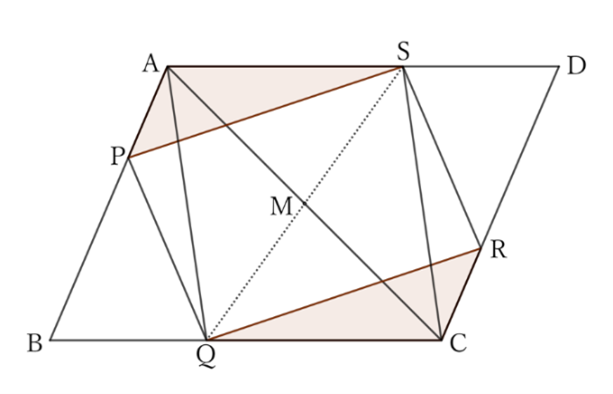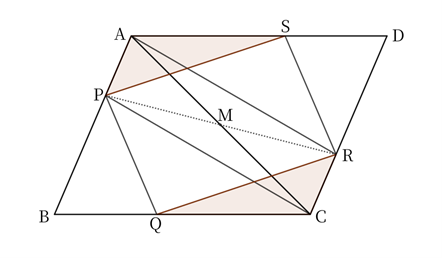If each vertex of a parallelogram $PQRS$ is on each side of another parallelogram $ABCD$, then the diagonals of the two parallelograms pass through the same points.
$\downarrow$ $\downarrow$ $\downarrow$ $\downarrow$ $\downarrow$
$$ $$Solution

For $△APS$ and $△CRQ$,
$$PS=RQ, \qquad ∠ASP=∠CQR \qquad and \qquad ∠APS=∠CRQ,$$
$$∴ \quad △APS≡△CRQ,$$
$$∴ \quad AS=CQ \qquad and \qquad AS∥CQ.$$
In other words, the quadrilateral $AQCS$ is a parallelogram.
Hence, the diagonal $QS$ passes through the midpoint $M$ of $AC$.

Similarly, since $△APS≡△CRQ$,
$$AP=CR \qquad and \qquad AP∥CR.$$
In other words, the quadrilateral $APCR$ is a parallelogram.
Therefore, we can see that $PR$ also passes through the midpoint $M$ of $AC$.
However, $BD$ and $AC$ intersect at $M$.
Therefore, $AC, \ BD, \ PR$ and $SQ$ pass through the same point.
Reference Teiichiro Sasabe (1976) The Encyclopedia of Geometry (2nd edition), Seikyo-Shinsha, p.46.